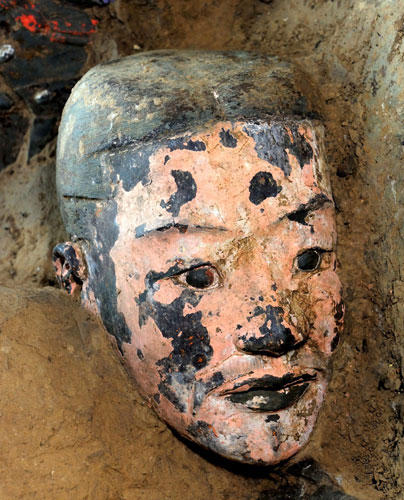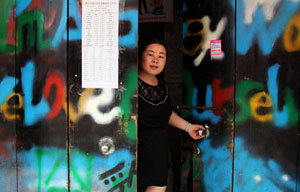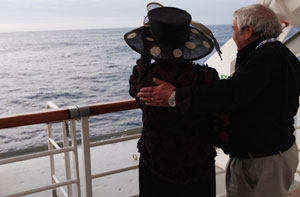More terracotta warriors discovered in NW China
Updated: 2012-06-10 21:47
(Xinhua)
|
||||||||
 |
|
A newly unearthed terracotta warrior at the No 1 Pit of the Mausoleum of Emperor Qin Shihuang, June 9, 2012. [Photo/Xinhua] |
Signs of burning
As excavation work progresses, experts have confirmed that fires burned in some of the pits. The colors of some terracotta figures and the earth, as well as a large quantity of black charcoal residue, are signs of burning.
Experts have ruled out that fires were part of an ancient ritual, as just a few of the pits showed signs of burning, said Yuan.
He said it might be the result of the actions of Xiang Yu, a prominent military leader and political figure during the late Qin Dynasty who was believed by some historians and archaeologists to set fire to the Mausoleum of Emperor Qinshihuang. Xiang led rebel forces against the Qin armies and was one of the key persons responsible for the fall of the Qin Dynasty.
He said the excavation team found a large quantity of black charcoal residue left by the burning of wood and hemp rope, which means the materials were burned not long after the mausoleum was built. Otherwise, things like wood and hemp rope would decay with time, and could not turn into charcoal.
Yuan added there is still no concrete evidence or findings to support his theories, and archeologists are still carrying out excavation and research work.
According to Cao Wei, president of Museum of the Terracotta Warriors and Horses of Qinshihuang, the excavation is the third such large-scale project approved by State Administration of Cultural Heritage. The project started in June 2009, and will last for two or three more years.
He said the precious cultural relics discovered during the excavation process will provide more research materials and promote a deeper understanding of the terracotta armies.
Since the Terra-cotta Army was discovered in 1974, 3 burial pits have been excavated, about 8,000 life-size clay warriors and horses have been found in the pits. The Museum of the Terra-cotta Army is constructed on the site of its findings.







